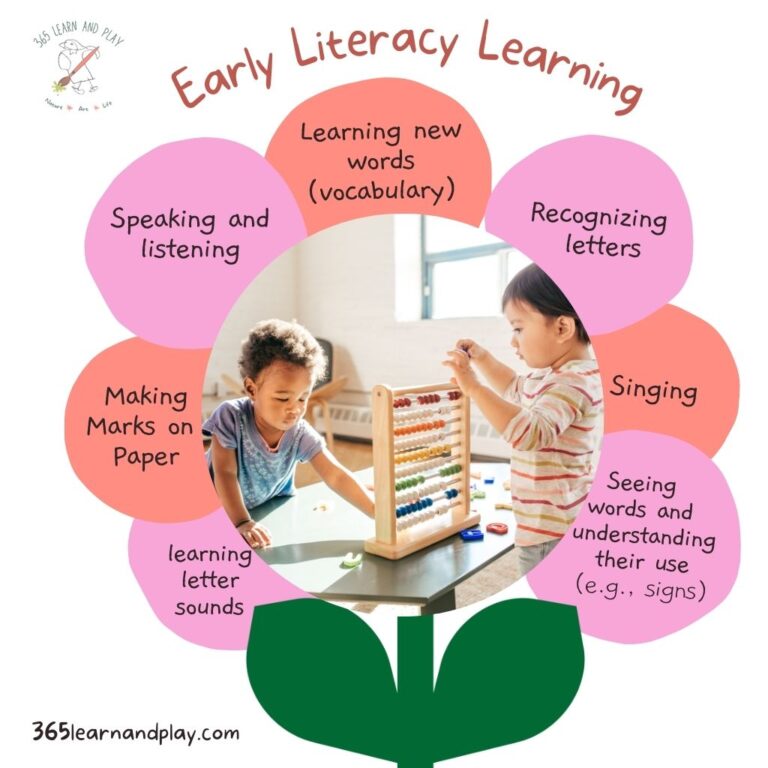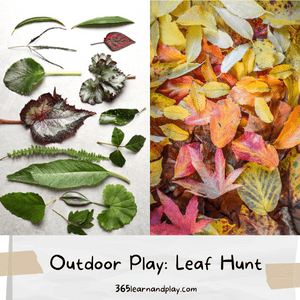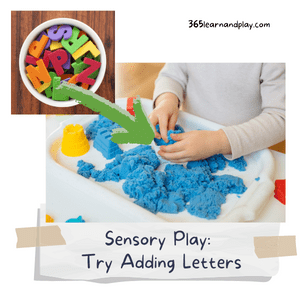
Babies who are developing in the womb are already starting to learn a language. I was pregnant when I read this fact and was astonished. It’s true; we are born to learn language, but having help along the way from supportive caregivers makes a huge difference in helping young kids learn to read.
Helping kids learn to read: reading together
If you ask most parents how they help their kids learn to read, they’ll probably say by reading books with them. We love books in our house and reading aloud is a part of our bedtime routine. I love kids picture books. In fact, I think I love some of our children’s books just as much as my kids do!
Beyond a good story, what’s happening when you read with your kids?
When you read with your kids, there’s a lot happening behind the scenes beyond enjoying a good story together. When you read to them, kids gain exposure to new words (vocabulary), learn to make predictions, recognize and repeat sounds, make connections between pictures and words, and more. Aubree at Generation Motherhood also explains that the time you spend snuggled up and reading with your child forms important bonds.


Play is also component of literacy development
What makes scribbles on a paper over time turn into simple shapes and then, eventually, become letters? As children develop, language skills build upon each other. Many of these skills are learned through play, and early literacy play is a type of play provides a foundation for reading. There are several early literacy skills that kids can learn through play:
- Oral language – speaking, listening, learning new words, singing
- Alphabet learning – recognizing letters, learning letter sounds and sounds in words
- Print language – making marks on paper, looking at books, seeing print in different environments (grocery store, street signs, recipes) and recognizing its uses

Simple play ideas that can help kids learn reading skills
No need to worry…early literacy play is actually simple and fun. In fact, many play activities you probably already do with your kids have a component of early literacy play. When I look for new play activities, generally try ideas that are easy to add to our daily routine. Here’s a list I’ve put together of simple early literacy play ideas. They are free or low-cost and require few supplies. I’ve also included a free choice board Early Literacy Choice Board you can download.
Outdoor play
Playing outdoors has so many benefits for children and families. Here are some great ways to bring literacy play outside.
- Build vocabulary on a nature walk: When you’re out for a walk with your little ones, talk about the things you see in nature and describe these things in detail. The adjectives you use will add to their vocabulary. They’ll hear and learn new words from you. For example: “Wow, look at that tall tree! See its green leaves swaying in the wind? Look how straight its trunk is and how rough the brown bark is. Which tree do you like?”
- Search and find activities: You can help your children name and identify objects by playing outdoor games that encourage searching and finding:
- Free nature scavenger hunts (with pictures or words depending on the age of your child) help children to make connections between objects and their characteristics. Here are two free nature printables you might like to try: Five sense nature scavenger hunt and nature bingo.
- You can make a simple nature color search activity, using cardboard and clothes pins, like this example. If you don’t have clothes pins, you could use binder clips, paper clips, or tape.
- Another simple outdoor hunt is a leaf hunt.
- Make a collection of as many different kinds of leaves as you can find.
- Line them all up and compare and contrast how they look using descriptive language.
- For example: “These ones have rounded edges, and these leaves have jagged edges.” You can also arrange the leaves by small, medium and large.

- Actions and songs at the park. When you’re at the playground, you can have early literacy fun with simple activities like animal walks, singing and playing with balls.
- Animal walks – have fun moving around like different animals. It’s great for gross motor (large muscle) development and for learning animal names and descriptive movements.
- Some movements to try are: duck waddles, kangaroo hops, frog jumps, bear walks, penguin shuffles, horse gallops, dinosaur stomps, etc.
- You can even chant the letter sound each animal begins with while you’re playing the game. For example, “K, K, K I’m a kangaroo (while you are jumping)”.
- Kids love having adults playing along with them making the same silly movements.
- Singing on the swing: singing is a great way to develop children’s ability to distinguish and make sounds, as well as learn rhyming words. Swinging has a natural rhythm, so it’s perfect for singing. Singing can also help kids strengthen their breathing through core muscle development (when you push air out), and it just helps you feel good. Try swing some simple kids songs (like row, row your boat) while pushing your kids on the swing.
- Roll, catch or kick a ball to different letters, numbers or words – Using a ball, you can spell out your child’s name as you roll the ball back and forth, or you can roll it back and forth to the ABCs or as you count to ten. Another idea is to draw some letters in the sand and have your child kick or roll the ball to that letter.

Sensory play to help kids learn to read
Most kids love sensory play (hands on play with different textured materials) because it’s soothing and enables them to explore new sensations in a fun way. It also helps form connections between their brain and bodies. So, this type of play is ideal for early literacy activities. Here are some sensory play ideas to try:
- Encourage mark making and letter making with sensory materials:
- Playdough – make letters from coils, “write” on a flat play dough piece with a pencil, or use stamps to stamp letters into playdough
- Sensory tray or bin – cover a tray or the bottom of a plastic bin with one type of sensory material like shaving cream, sand, rice/beans, salt/sugar, then have your child trace marks or letters in the material.
- Hide little toys (like bugs, dinosaurs, animals, etc.) in sensory material like sand, crushed ice, rice/beans, jello, or water with food coloring and cornstarch and let your child find and name the hidden toys. You can even talk about what letter they start with as you find them, or sort them by color/size. Note: Make sure to check for choking hazards if you’re doing this with young kids.



Arts and Crafts for early literacy
Arts and crafts are another great way to add early literacy to everyday play. There are so many possibilities for both open ended art and guided crafts.
- Open ended art: provide a few types of art materials (like markers, pastels, watercolors or crayons) and let your kids lead you through their creative process.
- Drawing: let children work on their art (even very young kids like experimenting with making marks on paper) and then ask them about their drawings. You can help them add words to their work by writing a few sentences or by labeling the items they’ve drawn.
- Collage: provide old magazines or newspapers, scissors and glue and let your child cut out and glue together whatever interests them. (If your children are too young to do the cutting, you can ask them point to the pictures they like and you can cut and glue for them.) Talk about the pictures that they’ve selected, and see if you can find any words to add to their collage.
- Guided crafts: here are some ideas for guided crafts (where children complete a planned project).
- Make puppets that go with your favorite fairy tales or favorite books. Once you’re done, you can use these to act out the stories.
- Create name crafts using different techniques such as, tape resist and paint, crayon resist and watercolor, ripped paper collage, stickers, and bingo stampers. Here are some examples of these suggestions and more.
- Make your own ABC book. Over time, you can make different pages of the alphabet and assemble your book, or you can find a printable to download for free or purchase. This site has many great examples of different alphabet pages you can create.
Have fun playing together
There are so many types of early literacy play that can help build a foundation for your child to learn to read. The activities you do can be simple and fun. There’s no pressure in play, just relax and let yourself explore with your little one. Kids treasure this time with their loved ones, and it builds deep bonds. So, whichever activities you choose, know that you’re both winning by having fun together. Download a free choice board with ideas inspired by this post.





One Response